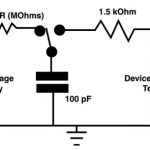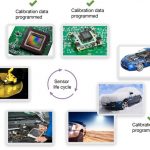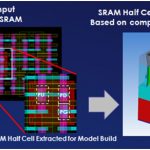Electro Static Discharge (ESD) is a fact of life for IC designs and has been ever since electronics were first created and then started failing because of sudden, large currents flowing through the design caused by human, processing or machine contact. It’s just too expensive to layout an IC today, fabricate it, test for … Read More
Electronic Design Automation
Then, Python walked in for verification
Go ahead – type “open source” into the SemiWiki search box. Lots of recent articles on the IoT, not so many on EDA tools. Change takes a while. It has only been about five years since the Big Three plus Aldec sat down at the same table to work on UVM. Since then, Aldec has also gotten behind OS-VVM, and is now linked to a relatively new open… Read More
Pizza con Questa
Last week I went to a lunch and learn at Mentor about their Questa formal product given by Kurt Takara. Like everyone else these days, Questa is packaged as a number of Apps for doing different tasks. Formal verification is different from other EDA tools in that different approaches can be used for different sub-tasks. There are three… Read More
How to Trim Automotive Sensor?
The electronic content in automotive is exploding, the market for automotive electronics systems is expected to grow from $170 billion in 2011 to $266 billion by 2016 (Strategy Analytics). When you seat in a brand new car, you immediately see the difference with a ten or even five years old vehicle, as you can exercise MP3 music readers,… Read More
High Tech Headwinds and Project/People Management
In previous posts, we discussed the growing set of challenges and threats faced by the semiconductor industry. From saturating & stagnant systems markets to the gears starting to seize up in that engine of growth we’ve been calling Moore’s Law, chip revenues are – with the exception of memory price boosts from supply… Read More
Enterprise IP Management – A Whole New Gamut in Semiconductor Space
The world of IPs in the semiconductor landscape has completely changed the semiconductor design scenario, specifically the fabless design space. Today IPs are key components of any large semiconductor design, in the same way as auto ancillaries in auto design. It’s just the beginning, in the days to come we will see SoCs just as… Read More
End-to-end look at Synopsys ProtoCompiler
Usually, we get the incremental story in news: this new release is x percent better at this or that than the previous release, and so on. Often missing is the big picture, telling how the pieces all tie together. Synopsys took on that challenge in their latest FPGA-based prototyping webinar. … Read More
Accelerating SoC Verification Through HLS
Once upon a time there was a struggle for verification completion of semiconductor designs at gate level. Today, beyond imagination, there is a struggle to verify a design with billions of gates at the RTL level which may never complete. The designs are large SoCs with complex architectures and several constraints of area, performance,… Read More
Taking a leap forward from TCAD
We all know that Technology Computer Aided Design (TCAD) simulations are essential in developing processes for semiconductor manufacturing. From the very nature of these simulations (involving physical structure and corresponding electrical characteristics of a transistor or device), they are predominantly finite-element… Read More
Temperature – The Fourth Aspect to Look at in SoC Design
In my career in semiconductor industry, I can recall, in the beginning there was emphasis on design completion with automation as fast as possible. The primary considerations were area and speed of completion of a semiconductor design. Today, with unprecedented increase in multiple functions on the same chip and density of the… Read More









Quantum Computing Technologies and Challenges